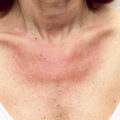HIV infection in children. Features of the course of HIV infection in children and newborns
Preserving and prolonging the lives of children with HIV infection directly depends on early detection and treatment of this disease. Timely initiation of antiretroviral therapy among newborns and children prevents early death. In our article you will learn about the characteristics of HIV infection in children, treatment and prognosis.
HIV transmission among children
Human immunodeficiency virus (HIV) is a viral infection that gradually destroys certain white blood cells in the body and causes acquired immunodeficiency syndrome (AIDS).
Most often, newborn children become infected with HIV:
- from an infected mother during pregnancy or childbirth;
- through mother's milk.
Children born with HIV infection almost always acquire the infection from their mother. HIV transmission in such cases occurs either during pregnancy or during childbirth (so-called vertical transmission of HIV or mother-to-child transmission).
The virus can also be transmitted through breast milk. Approximately 12 to 14% of infants not infected at birth acquire HIV infection while breastfeeding by an HIV-infected mother. Most often, HIV infection of a newborn baby occurs in the first few weeks or months of life, but it can occur later.
Adolescents become infected with HIV in the same way as adults. Most often, HIV transmission occurs during unprotected sex.
In very rare cases, HIV is transmitted when infected blood comes into contact with the skin. However, in almost all such cases, the surface of the skin was damaged by scratches or open sores.
HIV is not transmitted through:
- food;
- water;
- saliva;
- toilet seat;
- household items;
- social contact at home, work or school.
Symptoms and features of the course of HIV infection in children
Children born with HIV infection rarely have symptoms during the first few months, even if they have not received antiretroviral therapy . Studies have shown that only 20% of untreated newborns with HIV infection develop HIV symptoms during the first or second year of life. In the remaining 80% of children not taking antiretroviral therapy, HIV symptoms may not appear until the age of 3 years, and sometimes after 5 years.
Symptoms of HIV infection in children vary depending on the child's age. Symptoms of HIV infection acquired during adolescence are similar to those in adults.
HIV symptoms in untreated children
Common symptoms of HIV infection in untreated children include:
- slow growth and delayed maturation;
- bloating;
- swollen lymph nodes;
- periodic diarrhea;
- pneumonia;
- pulmonary infections;
- enlarged spleen or liver;
- oral thrush (a fungal infection in the mouth that is characterized by white patches on the cheeks and tongue; the lesions can be painful).
Sometimes children have repeated episodes of bacterial infections, such as a middle ear infection (otitis media), sinusitis, bacteria in the blood (bacteremia), or pneumonia.
Various symptoms and complications can appear when a child's immune system deteriorates. About one third of HIV-infected children develop pneumonia (lymphoid interstitial pneumonitis) with cough and difficulty breathing.
Children born with HIV infection usually have at least one episode of pneumonia. This serious opportunistic infection can occur as early as 4 to 6 weeks of age, but most often occurs between 3 and 6 months of age in infants with congenital HIV infection. Statistics show that more than 50% of untreated children infected with HIV will develop pneumonia at some point. Pneumocystis pneumonia is the leading cause of death among children and adults with AIDS.
In a significant number of HIV-infected children, progressive brain damage causes impairment in physical and mental development. Up to 20% of HIV-infected children who do not receive treatment gradually lose social skills and muscle control.
Anemia (low red blood cell count) is common in HIV-infected children and causes them to be weak and easily tired. About 20% of children develop heart problems, such as fast or irregular heartbeat or heart failure.
Children with HIV who are not treated often develop liver inflammation (hepatitis) or kidney inflammation (nephritis).
Cancer is rare in children with AIDS, but non-Hodgkin's lymphoma and brain lymphoma may be slightly more common than in uninfected children. Kaposi's sarcoma is common among HIV-infected adults, but is very rare in HIV-infected children.
Symptoms of HIV in children taking treatment
Children with HIV infection may not have any symptoms of HIV while taking antiretroviral therapy. Although bacterial pneumonia and other bacterial infections (such as bacteremia and recurrent otitis media) are much more common in HIV-infected children, opportunistic infections and developmental delays are much less common in children receiving appropriate treatment.
Although antiretroviral therapy significantly reduces the impact of brain and spinal cord disorders, children receiving treatment for HIV infection experience an increase in behavioral, developmental, and cognitive problems. It is unclear whether these problems are caused by HIV infection itself, the medications used for treatment, or other biological, psychological and social factors that are common among HIV-infected children.
Because antiretroviral therapy allows children and adults to live long, fulfilling lives, more people still develop long-term complications of HIV infection. These complications include obesity, heart disease, diabetes and kidney disease. These complications appear to be related both to HIV infection itself and to side effects of some antiretroviral drugs .
Diagnosis of children with HIV infection
Diagnosis of HIV infection in children begins with identifying HIV infection in pregnant women using routine prenatal blood screening.
For children under 18 months of age, standard adult blood tests for HIV antibodies or antigens are not helpful because the blood of an infant born to an HIV-infected mother almost always contains HIV antibodies that have passed through the placenta, even if the baby is not infected.
Therefore, to definitively diagnose HIV infection in children under 18 months of age, special blood tests called nucleic acid amplification tests are performed. These tests detect genetic material (DNA or RNA) using polymerase chain reaction (PCR) . The test confirms infection if HIV genetic material is detected in the child's blood.
For infants born to HIV-infected mothers, viral diagnostic testing is usually performed within the first 2 days of life, at 1 to 2 months of age, and at 4 to 6 months of age. The diagnosis of HIV infection can be made using two positive virological tests obtained from different blood samples.
For children over 18 months of age and adolescents, the same blood tests that are used to diagnose HIV infection in adults can be used. These are usually blood tests that look for HIV antibodies and antigens (for example, an ELISA blood test) .
Treatment
HIV-infected children receive virtually the same treatment as adults. Typically, treatment consists of a combination of antiretroviral drugs, including:
two nucleoside reverse transcriptase inhibitors (NRTIs) + a protease inhibitor or integrase inhibitor.
Sometimes a non-nucleoside reverse transcriptase inhibitor is given with two NRTIs.
However, not all medications used for adults are suitable for young children, in part because some medications are not available in liquid form.
In general, children develop the same types of side effects as adults, but usually at a much lower rate.
The doctor monitors the effectiveness of treatment by regularly measuring the amount of virus present in the blood ( viral load ) and the number of CD4+ cells in the child. An increase in the amount of virus in the blood may be a sign that the virus is developing resistance to drugs or that the child is not taking treatment. In this case, it may be necessary to change the prescribed medication regimen.
To constantly monitor the child’s condition and progress in treatment, it is necessary to regularly visit the attending physician and take blood tests for the HIV viral load once every 3-4 months. Other blood and urine tests are taken every six months to a year.
How long do children with HIV infection live?
A very important question that interests all parents is how long do children with HIV infection live? Today, thanks to antiretroviral therapy, the majority of children born with HIV infection live to adulthood, start families and give birth to new children.
However, when HIV infection in children is accompanied by opportunistic infections, especially Pneumocystis pneumonia, the prognosis may be poor unless antiretroviral therapy is successful. Pneumocystis pneumonia causes death in 5-40% of treated children and in almost 100% of untreated children.
The prognosis is also poor for children who are diagnosed with HIV early (within the first week of life) or who develop symptoms in the first year of life.
It is unknown whether HIV infection itself or antiretroviral therapy provided to HIV-infected children during critical periods of growth and development will cause additional side effects that appear later in life, as the first wave of children born with HIV infection and treated I’m just now reaching adulthood.
To date, there is no cure for HIV infection , and it is not yet known whether a complete cure for this disease is possible. However, it is known that HIV infection is suppressable and that with timely and proper treatment, HIV-infected children can live long and fulfilling lives.




